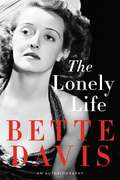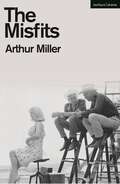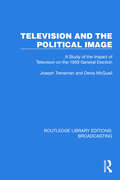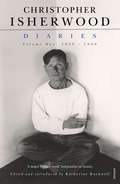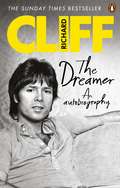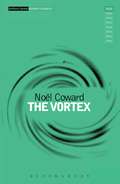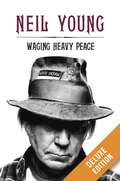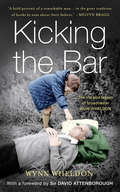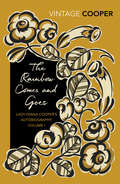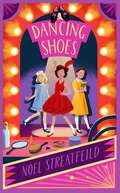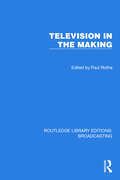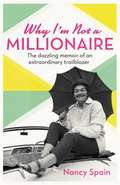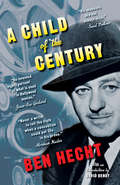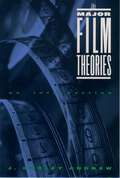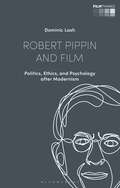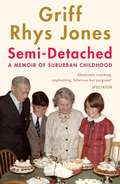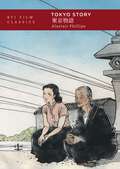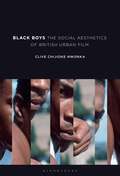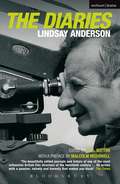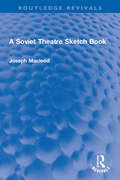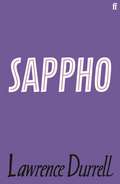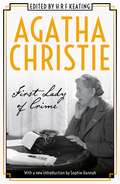- Table View
- List View
The Lonely Life: An Autobiography
by Bette DavisOriginally published in 1962, The Lonely Life is legendary silver screen actress Bette Davis's lively and riveting account of her life, loves, and marriages--now in ebook for the first time, and updated with an afterword she wrote just before her death. As Davis says in the opening lines of her classic memoir: "I have always been driven by some distant music--a battle hymn, no doubt--for I have been at war from the beginning. I rode into the field with sword gleaming and standard flying. I was going to conquer the world." A bold, unapologetic book by a unique and formidable woman, The Lonely Life details the first fifty-plus years of Davis's life--her Yankee childhood, her rise to stardom in Hollywood, the birth of her beloved children, and the uncompromising choices she made along the way to succeed. The book was updated with new material in the 1980s, bringing the story up to the end of Davis's life--all the heartbreak, all the drama, and all the love she experienced at every stage of her extraordinary life. The Lonely Life proves conclusively that the legendary image of Bette Davis is not a fable but a marvelous reality.
The Misfits: The Misfits; After The Fall; Incident At Vichy; The Price; Creation Of The World; Playing For Time
by Arthur MillerDiscover the cinema-novelization of Arthur Miller's 1961 American western film, The Misfits, which was directed by John Huston and went on to be one of the most popular cult films of the 1960s.A story of four lost souls - the beautiful Roslyn who has never belonged to anyone or anything, and three other misfits who roam the open land existing on the little money made from riding in rodeos and rounding up wild horses - who meet in Reno to discover that freedom has its price, and the heart its rules.The Misfits starred Clark Gable, Marilyn Monroe and Montgomery Cliff. Based on a short story of the same name, originally published in 1957, this cinema novel of the film includes an introduction by Arthur Miller himself.
Television and the Political Image: A Study of the Impact of Television on the 1959 General Election (Routledge Library Editions: Broadcasting #36)
by Joseph Trenaman Denis McQuailWas the 1959 UK General Election the first television election? Could television be used to create a Party ‘image’? Television and the Political Image (1961) provides answers to both these questions. It surveys two constituencies, interviewing the same cross-section of electors before and after the election campaign, and analyses and compares the campaigns as conducted by television, radio, the Press, and through the work of the local Parties. Various effects of the political barrage are measured and attributed to their sources; such effects include changes in voting intention during the course of the election campaign, changes in attitudes to Parties and their leaders, and changes in what the voter knows of the parties’ policies.
Television and the Political Image: A Study of the Impact of Television on the 1959 General Election (Routledge Library Editions: Broadcasting #36)
by Joseph Trenaman Denis McQuailWas the 1959 UK General Election the first television election? Could television be used to create a Party ‘image’? Television and the Political Image (1961) provides answers to both these questions. It surveys two constituencies, interviewing the same cross-section of electors before and after the election campaign, and analyses and compares the campaigns as conducted by television, radio, the Press, and through the work of the local Parties. Various effects of the political barrage are measured and attributed to their sources; such effects include changes in voting intention during the course of the election campaign, changes in attitudes to Parties and their leaders, and changes in what the voter knows of the parties’ policies.
Christopher Isherwood Diaries Volume 1
by Christopher IsherwoodIn 1939 Christopher Isherwood and W. H. Auden emigrated together to the United States. In spare, luminous prose these diaries describe Isherwood's search for a new life in California; his work as a screenwriter in Hollywood, his pacifism during World War II and his friendships with such gifted artists and intellectuals as Garbo, Chaplin, Thomas Mann, Charles Laughton, Gielgud, Olivier, Richard Burton and Aldous Huxley.Throughout this period, Isherwood continued to write novels and sustain his literary friendships - with E. M. Forster, Somerset Maugham, Tennessee Williams and others. He turned to his diaries several times a week to record jokes and gossip, observations about his adopted country, philosophy and mystical insights. His devotion to his diary was a way of accounting for himself; he used it as both a discipline and a release.
The Dreamer: An Autobiography
by Cliff RichardEarly evening on Saturday 13th September, 1958, Cliff Richard and The Drifters appeared on ITV's pop show Oh Boy!, electrifying living rooms across the nation with their now legendary performance of 'Move It'. Overnight, the 17-year-old Elvis fan with big dreams became a real-life teen idol, and Britain had their first rock 'n' roll star. A new chapter had started in the history of music.Over sixty years later, with a hit in every decade since and over 250 million record sales, Cliff Richard performes live to sell-out audiences with continued success as a recording artist, while era-defining pop stars have come and gone.Now in his autobiography, Cliff takes us back to 1950s post-War London, where he exploded out of the skiffle scene with his unique new sound. From there he is catapulted into the centre of the British film industry, and goes on to conquer Saturday-night TV. We go behind the scenes on West End musicals, and around the world with him on tour.Cliff Richard is one of the biggest-selling artists of all time, and he has achieved that while always following his own path, on his own terms. Here he tells his story in his own words, through the toughest times he has faced, to the biggest dreams that came true.
The Vortex (Modern Classics)
by Noël CowardA single-volume edition of one of Coward's masterpieces, published to tie in with major Donmar Warehouse production in December 2002In The Vortex, Coward explores the darker side of the Cocktail Party set. Emotional blackmail, drug abuse and shattered relationships are minutely observed in this disturbing, early piece from a playwright whose sharp eye was more usually turned towards the light.This first ever single-volume edition of this frequently revived Coward play ties in with the major revival directed by Michael Grandage, starring Francesca Annis and Chiwetel Ejiofor and Indira Varma at London's Donmar Warehouse."Here is a piece which is the dernier cri in the theatrical mode, un peu shocking perhaps, but no less popular on that account" James Agate
Waging Heavy Peace Deluxe: A Hippie Dream
by Neil YoungThe deluxe eBook edition of Waging Heavy Peace includes excerpts of more than fifteen Neil Young songs (personally selected by Young himself) such as "After the Gold Rush," "Like a Hurricane," and "The Needle and the Damage Done," providing a soundtrack to his stories. Interspersed throughout the text are ten rare Young videos from his own archives, offering an uncommon behind the scenes glimpse of the man behind this memoir. In addition, a complete discography guarantees that diehard devotees and new fans alike enjoy the ultimate Neil Young experience. For the first time, legendary singer, songwriter, and guitarist Neil Young offers a kaleidoscopic view of his personal life and musical creativity. He tells of his childhood in Ontario, where his father instilled in him a love for the written word; his first brush with mortality when he contracted polio at the age of five; struggling to pay rent during his early days with the Squires; traveling the Canadian prairies in Mort, his 1948 Buick hearse; performing in a remote town as a polar bear prowled beneath the floorboards; leaving Canada on a whim in 1966 to pursue his musical dreams in the pot-filled boulevards and communal canyons of Los Angeles; the brief but influential life of Buffalo Springfield, which formed almost immediately after his arrival in California. He recounts their rapid rise to fame and ultimate break-up; going solo and overcoming his fear of singing alone; forming Crazy Horse and writing "Cinnamon Girl," "Cowgirl in the Sand," and "Down by the River" in one day while sick with the flu; joining Crosby, Stills & Nash, recording the landmark CSNY album, Déjà vu, and writing the song, "Ohio;" life at his secluded ranch in the redwoods of Northern California and the pot-filled jam sessions there; falling in love with his wife, Pegi, and the birth of his three children; and finally, finding the contemplative paradise of Hawaii. Astoundingly candid, witty, and as uncompromising and true as his music, Waging Heavy Peace is Neil Young's journey as only he can tell it.
Kicking the Bar: The life and legacy of broadcaster Huw Wheldon
by Wynn WheldonWritten by his son, Kicking the Bar is the comprehensive biography of Huw Wheldon, one of the most well-respected and influential media figures in British history – with a foreword by Sir David Attenborough. As a former BBC broadcaster and executive, Huw Wheldon ran the network in the 60s and 70s during a tumultuous period many describe as the 'Golden Age of Television', with programmes such as Civilization, Alistair Cooke's America, The Ascent of Man, Steptoe and Son, Till Death Us Do Part, and Dad's Army.Wynn Wheldon weaves the story of his father's life, tracing back to his forebears in nineteenth-century Wales and their strong protestant ethic that would influence his future endeavours, and culminating in a moving chapter describing the final months of his life. In between, he explores his father's childhood and education – revisiting his time at the London School of Economics; his service in the Second World War (including landing by glider in Normandy and passing through Belsen days after its liberation); and his eventual foray into the arts and media, leading iconic entertainers and broadcasters through the extraordinary new medium of television. Kicking the Bar is partly a fascinating history of the remarkable man who helped shape Britain's cultural landscape, and partly the tender reflections of a son on his relationship with his father.
The Rainbow Comes and Goes
by Lady Diana CooperLady Diana Cooper was a star of the early twentieth stage, screen and social scene. This first instalment of her sparkling autobiography tells of her upbringing, her beautiful artistic mother and aristocratic father, her debut into high society and the glittering parties - 'dancing and extravagance and lashing of wine, and charades and moonlit balconies and kisses' - which were interrupted with the outbreak of the First World War. This volume ends with Diana's marriage to the 'love of her life', diplomat and politician Duff Cooper.
Dancing Shoes
by Noel StreatfeildHigh kicks and low blows are all around in this entertaining story about life at stage school - by the author of Ballet Shoes, this is perfect for young fans of shows like The Next Step, Cheer and The Greatest Dancer.It's 1957 and Rachel and Hilary are sent to live with their ambitious aunt who runs a stage school, training a troupe of dancing girls. It's heaven for Hilary who loves to perform, but quite the opposite for quiet Rachel. The last thing Rachel wants is to become one of her aunt's Little Wonders - particularly if it means behaving like their irritating show-off of a cousin . . . A mischievous, fun and moving story about young performers, from the acclaimed author of the classic Ballet Shoes.
Television in the Making (Routledge Library Editions: Broadcasting #37)
by Paul RothaTelevision in the Making (1956) looks at television in its infancy, with essays by the leaders of the medium at the time, people who were forging new paths as they imagined and actioned the possibilities of television.
Television in the Making (Routledge Library Editions: Broadcasting #37)
Television in the Making (1956) looks at television in its infancy, with essays by the leaders of the medium at the time, people who were forging new paths as they imagined and actioned the possibilities of television.
Why I'm Not A Millionaire: The dazzling memoir of an extraordinary trailblazer
by Nancy SpainThe superb classic memoir from a dazzlingly eccentric and endlessly fascinating author - a woman very much ahead of her time.'She was bold, she was brave, she was funny, she was feisty. I owe her a great deal in leading the way' Sandi ToksvigNancy Spain was one of the most celebrated - and notorious - writers and broadcasters of the 40s, 50s and 60s. Hilarious, controversial and brilliant, she lived openly as a lesbian (sharing a household with her two lovers and their various children) and was frequently litigated against for her newspaper columns - Evelyn Waugh successfully sued her for libel... twice. She was also a fantastic crime novelist (and according to the Guardian, one of the 50 best female crime thriller writers of all time) writing with a unique style that marries the acid wit of Dorothy Parker with the intricacy of plotting worthy of Agatha Christie. WHY I AM NOT A MILLIONAIRE, has the same wit, style and fascinating detail - first published in 1956, with an introductory note from Noel Coward. After her death in a plane crash in 1964, Noel Coward commented: 'It is cruel that all that gaiety, intelligence and vitality should be snuffed out, when so many bores and horrors are left living.'
A Child of the Century
by Ben HechtBen Hecht’s critically acclaimed autobiographical memoir, first published in 1954, offers incomparably pungent evocations of Chicago in the 1910s and 1920s, Hollywood in the 1930s, and New York during the Second World War and after. "His manners are not always nice, but then nice manners do not always make interesting autobiographies, and this autobiography has the merit of being intensely interesting."—Saul Bellow, New York Times Named to Time’s list of All-Time 100 Nonfiction Books, which deems it "the un-put-downable testament of the era’s great multimedia entertainer."
The Major Film Theories: An Introduction (Galaxy Books)
by J. Dudley AndrewBoth a history of film theory and an introduction to the work of the most important writers in the field, Andrew's volume reveals the bases of thought of such major theorists as Munsterberg, Arnheim, Eisenstein, Balazs, Kracauer, Bazin, Mitry, and Metz.
Robert Pippin and Film: Politics, Ethics, and Psychology after Modernism (Film Thinks)
by Dominic LashRobert Pippin (1948- ) is a major figure in contemporary philosophy, having published influential work on thinkers including Kant, Hegel, and Nietzsche. He is also an original thinker about – and critic of – film who has written books and numerous articles on canonical subjects such as the Western, Film Noir, and Hitchcock's Vertigo. In Robert Pippin and Film, Dominic Lash demonstrates the ways that film has been crucial to Pippin's thought on important philosophical topics such as political psychology, ethics, and self-knowledge. He also explores the implications of Pippin's methodological commitments to clear language and to maintaining close contact with the details of the films in question. In so doing, Lash brings Pippin's work on film to a wider audience and contributes to current debates both within film studies and beyond. This includes those concerning the relationships between film and philosophy, criticism and aesthetics, and individual subjectivity and political consciousness.Lash focuses on Pippin's major works on film – Hollywood Westerns and American Myth (2010), Fatalism in American Film Noir (2012), The Philosophical Hitchcock (2017), and Filmed Thought (2020) as well as his many shorter writings on film.
Semi-Detached
by Griff Rhys JonesSemi-detached Griff relives freezing bus journeys to school and the impulsive stealing of that half-a-crown from Charlie Hume’s money box; sitting outside Butlins at Clacton (longing to be inside and on the Waltzer instead of stranded on the pebbles with his dad); hazy summer afternoons spent with feral gangs in the woods, or storming the mud flats singing extracts from the Bonzo Dog Dooh Dah Band. The memories are like Mivvis, frozen and fuzzy at the edges, but a sweet jam of pure recollected goo at the centre.From birth to the BBC, this is a story of a confident middle child. Griff’s devoted parents Gwynneth and Elwyn gave him love, security and plenty of asparagus soup from a fake wicker vacuum flask with a plastic top. Griff’s father Elwyn, a retiring hospital doctor with a penchant for sweeties and ice-cream, loathed the tedium of English social ritual and hid behind his family and woodwork. From tree houses to boats, puppets to tables, he sawed and hammered his way into his family’s affections.Griff left the bosom of his loving, irascible, eccentric, solid, all engulfing family for the firm embrace of real life; via the Upminster Fun Gang, the Direct Grant System and Party Sevens, losing his virginity down the back of a bunk in a twenty nine foot yacht, discovering the romantic advantages of shared babysitting engagements and the drawbacks of infatuation with identical twins. If he hadn’t moved around so much as a child, would Griff have felt less like a voyeur, looking in on the lighted window across the square, the Georgian house glowing in the sun, the clink of glasses and the bray of public school certainties? Would he be able to tuck in his own shirt? Would he be fully detached? A laugh-aloud buffet of baby boomer Britain, Griff’s self-deprecating, elegant, affectionate prose reveals a little bit better how on earth you got from there to here.
Tokyo Story (BFI Film Classics)
by Alastair PhillipsOzu Yasujiro's moving family drama, Tokyo monogatari/Tokyo Story (1953), is universally acknowledged as one of the most significant Japanese films ever made, and regularly cited as one of the greatest films of all time in polls of leading critics and filmmakers around the world. Telling the story of an elderly couple who travel to Tokyo to visit their grown-up children, the film contrasts the behaviour of their children, who are too busy to pay their parents much attention, and their widowed daughter-in-law who treats them with hospitable kindness. In its complex portrait of human motivation and lively sense of social space, it offers a profound and poignant insight into the generational shifts of postwar Japan. Alastair Phillips combines a close analysis of the film and its key locations - the city of Tokyo, the town of Onomichi and the coastal resort of Atami - with a discussion of its representation of Japanese society at a time of great cultural change. Drawing upon Japanese and English language sources, he situates the film within various contemporary critical and industrial contexts and examines the multiple international dimensions of Tokyo Story's long after-life to understand its enormous contribution to global film culture.
Black Boys: The Social Aesthetics of British Urban Film
by Clive Chijioke NwonkaIn Black Boys: The Aesthetics of British Urban Film, Nwonka offers the first dedicated analysis of Black British urban cinematic and televisual representation as a textual encounter with Blackness, masculinity and urban identity where the generic construction of images and narratives of Black urbanity is informed by the (un)knowable allure of Black urban Otherness. Foregrounding the textual Black urban identity as a historical formation, and drawing on a range of theoretical frameworks that allow for an examination of the emergence and continued social, cultural and industrial investment in the fictitious and non-fictitious images of Black urban identities and geographies, Nwonka convenes a dialogue between the disciplines of Film and Television Studies, Philosophy, Cultural Studies, Black Studies, Sociology and Criminology. Here, Nwonka ventures beyond what can be understood as the perennial and simplistic optic of racial stereotype in order to advance a more expansive reading of the Black British urban text as the outcome of a complex conjunctural interaction between social phenomena, cultural policy, political discourse and the continuously shifting politics of Black representation. Through the analysis of a number of texts and political and socio-cultural moments, Nwonka identifies Black urban textuality as conditioned by a bidirectionality rooted in historical and contemporary questions of race, racism and anti-Blackness but equally attentive to the social dynamics that render the screen as a site of Black recognition, authorship and authenticity. Analysed in the context of realism, social and political allegory, urban multiculture, Black corporeality and racial, gender and sexual politics, in integrating such considerations into the fabrics of a thematic reading of the Black urban text and through the writings of Stuart Hall, Paul Gilroy, Judith Butler and Derrida, Black Boys presents a critical rethinking of the contextual and aesthetic factors in the visual constructions of Black urban identity.
Lindsay Anderson Diaries (Diaries, Letters and Essays)
by Lindsay AndersonAs a director, critic, writer and actor, Lindsay Anderson established a reputation as one of the most innovative, impassioned and fiercely independent British artists of the twentieth century. In directing films such as IF, THIS SPORTING LIFE and O LUCKY MAN he championed a new wave of social responsiveness in British cinema, while as director at the Royal Court he was responsible for establishing the reputation of a number of groundbreaking plays. Throughout his life Anderson stood in opposition to the establishment of his day. Published for the first time, his diaries provide a uniquely personal document of his artistic integrity and vision, his work, and his personal and public struggles. Peopled by a myriad of artists and stars - Malcolm McDowell, Richard Harris, Albert Finney, Anthony Hopkins Brian Cox, Karel Reisz, Arthur Miller, George Michael - the Diaries provide a fascinating account of one of the most creative periods of British cultural life.
A Soviet Theatre Sketch Book (Routledge Revivals)
by Joseph MacleodFirst Published in 1951, A Soviet Theatre Sketch Book presents Joseph Macleod’s take on Russian Theatre in a semi-fictional way to show the effect of the productions upon different audiences. By using his pen as an artist uses his pencil, he gives, for the first time, an account of theatre audiences as composed of individual human beings and is able to paint the scenes vividly without neglecting the technical methods of the Soviet stage. By supple use of the sketch- book form, theatres, theatre-schools, actors, and actresses including some no longer appearing are painted into an all-over view of Russian and Ukrainian post-war life. In this book the author writes less immediately about the Soviet Union and does not depend on topicality or stop press news. Joseph Macleod and his wife visited the Soviet Union as the guests of the Russian and Ukrainian Societies for Cultural Relations with Foreign Countries. This book will be of interest to scholars and researchers of theatre, history of theatre, and performance studies.
A Soviet Theatre Sketch Book (Routledge Revivals)
by Joseph MacleodFirst Published in 1951, A Soviet Theatre Sketch Book presents Joseph Macleod’s take on Russian Theatre in a semi-fictional way to show the effect of the productions upon different audiences. By using his pen as an artist uses his pencil, he gives, for the first time, an account of theatre audiences as composed of individual human beings and is able to paint the scenes vividly without neglecting the technical methods of the Soviet stage. By supple use of the sketch- book form, theatres, theatre-schools, actors, and actresses including some no longer appearing are painted into an all-over view of Russian and Ukrainian post-war life. In this book the author writes less immediately about the Soviet Union and does not depend on topicality or stop press news. Joseph Macleod and his wife visited the Soviet Union as the guests of the Russian and Ukrainian Societies for Cultural Relations with Foreign Countries. This book will be of interest to scholars and researchers of theatre, history of theatre, and performance studies.
Sappho
by Lawrence Durrell'A magician.' The Times'A philosophical play of ideas, exploring loss, war, and incest in Ancient Greece, by the celebrated author of The Alexandria Quartet.Lesbos, Ancient Greece. Lawrence Durrell's intricate play follows vivid characters who represent different attitudes towards the role of the individual in the world, exploring how their lofty ideals are transformed when they become victims of unforeseeable real-life circumstances. Eloquent, tragic, poetic, Durrell's parable is a powerful study of idealism in an imperfect universe, drawing vibrant parallels between the classical world and our modern existence.
Agatha Christie: First Lady of Crime
by Agatha ChristieIncludes a new introduction from Sophie Hannah, bestselling author of THE MONOGRAM MURDERSAgatha Christie was not only the biggest selling writer of detective stories the world has ever known, she was also a mystery in herself, giving only the rarest interviews, declining absolutely to become any sort of public figure, and a mystery too in the manner in which she achieved her astonishing success.H R F Keating, a crime novelist and respected reviewer of crime fiction, brought together a dozen distinguished writers from both sides of the Atlantic to throw light on this double mystery. Some analyse the art itself; some explain the reasons for her success, not just the books, but also in film and theatre.The approaches are penetrating, affectionate, enthusiastic, analytical, funny - even critical. Together, they give an almost unique insight into the life and work of the First Lady of Crime.
